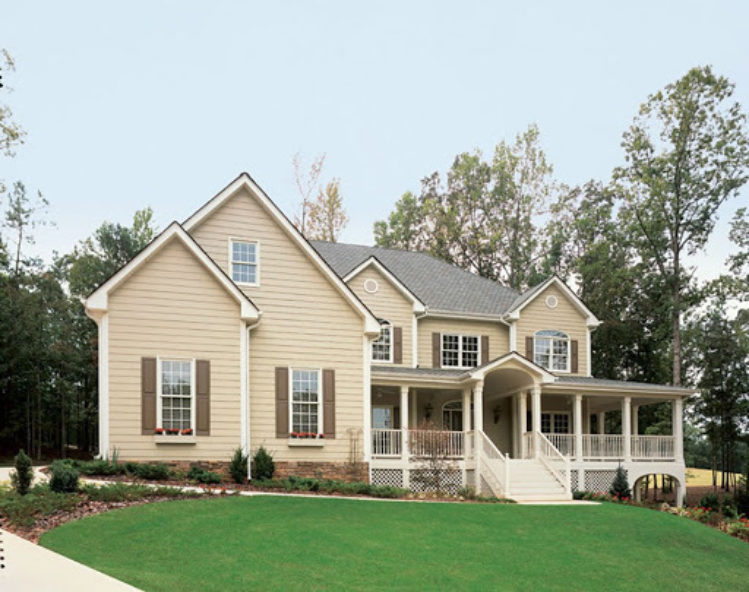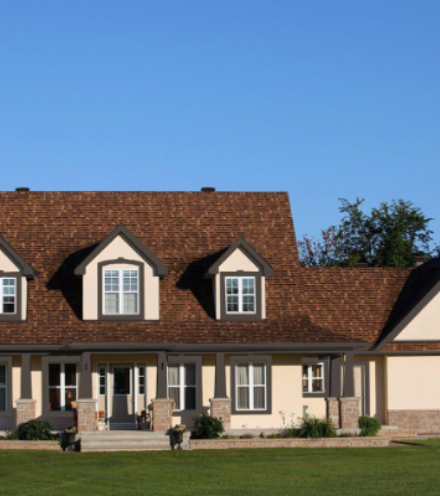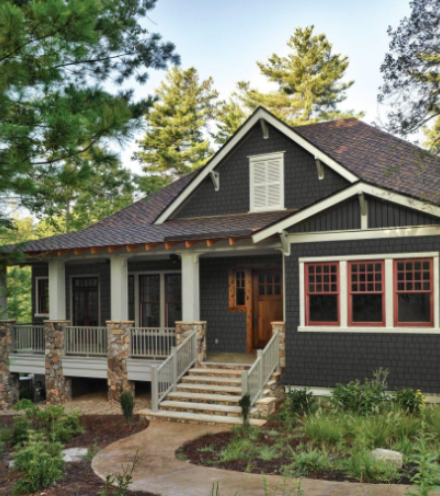Selecting a siding product for your home is a big decision. Every contractor and designer has their own preferences and materials they’re familiar with, which can lead to certain misconceptions popping up about new building materials. This is the case with fiber cement — those who have worked with it can attest to its durability and value, often selecting it over traditional materials, but those who haven’t discovered it yet may have certain misconceptions and doubts.
In reality, fiber cement siding problems are far and few between. To better understand what this innovative building material can do, take a look at eight of the most common misconceptions concerning fiber cement:

1. Fiber Cement Has a Plain Surface
This is by far one of the biggest misconceptions about fiber cement. Because of its name, people often associate it with a plain surface, which couldn’t be further from the truth. Fiber cement siding is available in sleek, smooth panels and planks, but it is also available in patterned selections, too, including those that resemble natural wood grain. In fact, wood-look fiber cement siding is among the most popular selections for homeowners that are seeking a cozy, warm, traditional aesthetic for their home.

2. Fiber Cement is Only Available in Boring Colors
Again, don’t let the word ‘cement’ fool you when it comes to the appearance of this innovative siding material. Fiber cement siding is offered in a wide array of colors, from warm earthy tones to traditional grays, to vibrant, contemporary pops of color. Some builders like to rely on a single color tone to create consistency throughout the exterior, while others prefer to mix and match fiber cement siding colors to create more eye-catching compositions. Fiber cement is anything but boring when it comes to color choice.

3. Fiber Cement is Made with Asbestos
Many builders mistake modern fiber cement siding products with the crude experimental versions that were common when it was first introduced decades ago. While some of the original versions did contain asbestos, the fiber cement products that are produced today have been significantly reworked and formulated with much safer products.
4. Fiber Cement is the Most Expensive Siding Material.
Premium, high-end siding options, like real cedar and stone, are often much more expensive than fiber cement. Fiber cement is typically more expensive upfront than other options like vinyl, but the investment usually pays for itself in the long run when accounting for the significant amount of upkeep, repair, and replacement that common siding options require. For example, cheap wood or vinyl siding may not cost much initially, but it’s likely to require regular repainting, restaining, and individual plank replacement due to scratches, holes, rotting, warping, insect damage, and other regular exposure to the elements. Fiber cement siding problems rarely stack up as quickly (or as severely) as they do with traditional siding.

5. Fiber Cement Requires Little Maintenance or Upkeep
Just like all building materials that are consistently exposed to the elements, fiber cement does require a small amount of upkeep from time to time to keep it looking and performing its best. However, the maintenance required to take care of fiber cement is minimal compared to other siding options, which is why it has gained the misconception of being virtually maintenance-free. In reality, fiber cement is low-maintenance, and an occasional wash down with mild soap and water is enough for this sturdy siding to stay in tip-top shape.
6. Fiber Cement Doesn’t Work Well with Other Materials
One of the luxuries of fiber cement is that it is available in such an immense variety of styles and colors. This makes it an excellent material to work with — whether creating textured contrast with stone, combining it with natural wood features, or pairing it with metallic accents. Not only does fiber cement offer an abundance of styles to mix and match, it also works really well with other building materials.

7. Fiber Cement Can Only Be Used as Siding
There’s also a common misconception that fiber cement can only be used as exterior siding, which is simply not the case. In fact, fiber cement products extend to other areas of the home’s exterior as well, including fiber cement beadboard for porch ceilings, fiber cement fascia, decorative trim, and sturdy soffit. It’s true that fiber cement is best known for siding, but it is built to do so much more.

8. Fiber Cement is Only Necessary in Areas with Severe Weather
It’s no secret that fiber cement is well-known for its enhanced durability, especially when it comes to protecting a home and its occupants from the elements. People in every geographic region can benefit from this increased level of protection. Since it is less flammable than wood and vinyl, fiber cement is a smart choice for dry, arid regions that are prone to wildfires. In addition, humid cities near the coast can benefit from choosing fiber cement rather than something that’s likely to rot due to excessive moisture, like wood.
Get the Facts Straight
Knowing the truth about fiber cement can help homeowners make an informed choice that will protect their home and loved ones for years to come. If you’re curious about fiber cement and want to get a quote for your project, contact the siding experts at Allura today.




